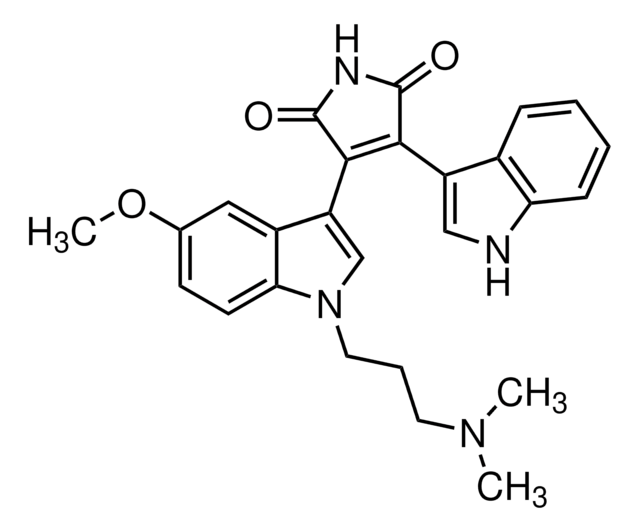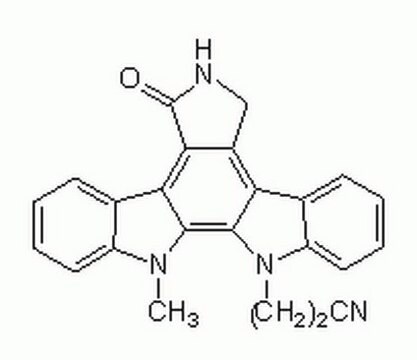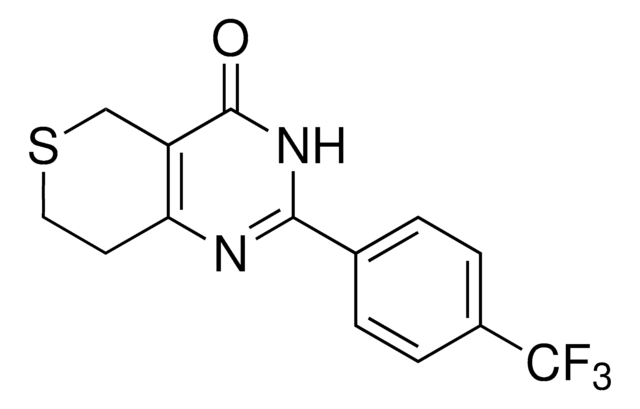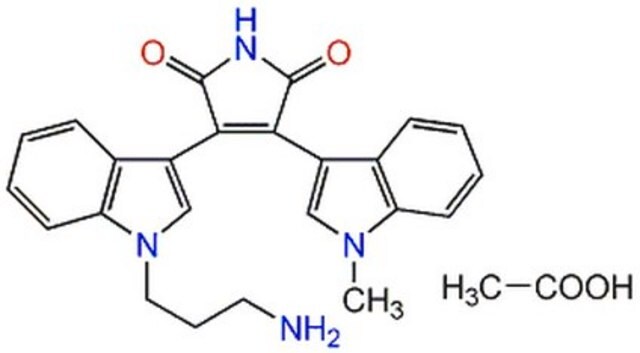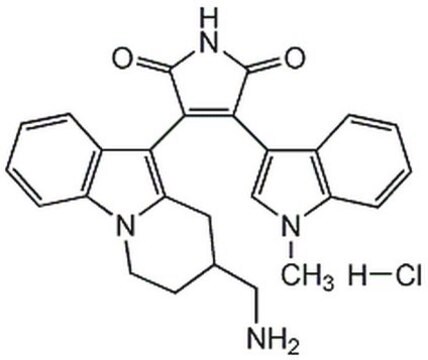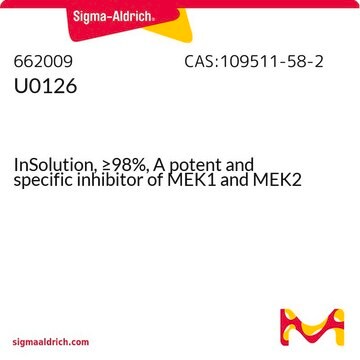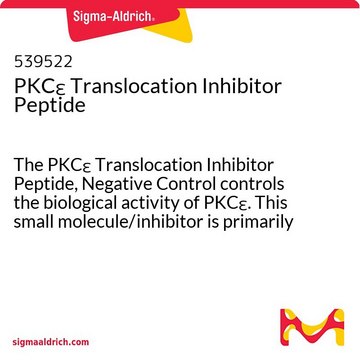365251
Gö 6983
A potent, cell-permeable, reversible, and ATP-competitive inhibitor of protein kinase C (PKC) that inhibits several PKC isozymes.
Synonim(y):
Gö 6983, 2-[1-(3-Dimethylaminopropyl)-5-methoxyindol-3-yl]-3-(1H-indol-3-yl) maleimide, Go 6983
About This Item
Polecane produkty
Poziom jakości
Próba
≥98% (HPLC)
Postać
solid
producent / nazwa handlowa
Calbiochem®
warunki przechowywania
OK to freeze
protect from light
kolor
orange-red
rozpuszczalność
DMSO: 100 mg/mL
Warunki transportu
ambient
temp. przechowywania
−20°C
InChI
1S/C26H26N4O3/c1-29(2)11-6-12-30-15-20(18-13-16(33-3)9-10-22(18)30)24-23(25(31)28-26(24)32)19-14-27-21-8-5-4-7-17(19)21/h4-5,7-10,13-15,27H,6,11-12H2,1-3H3,(H,28,31,32)
Klucz InChI
LLJJDLHGZUOMQP-UHFFFAOYSA-N
Opis ogólny
Działania biochem./fizjol.
PKCα and PKCβ
Ostrzeżenie
Inne uwagi
Stempka, L., et al. 1997. J. Biol. Chem. 272, 6805.
Gschwendt, M., et al. 1996. FEBS Lett. 392, 77.
Informacje prawne
Kod klasy składowania
11 - Combustible Solids
Klasa zagrożenia wodnego (WGK)
WGK 3
Certyfikaty analizy (CoA)
Poszukaj Certyfikaty analizy (CoA), wpisując numer partii/serii produktów. Numery serii i partii można znaleźć na etykiecie produktu po słowach „seria” lub „partia”.
Masz już ten produkt?
Dokumenty związane z niedawno zakupionymi produktami zostały zamieszczone w Bibliotece dokumentów.
Nasz zespół naukowców ma doświadczenie we wszystkich obszarach badań, w tym w naukach przyrodniczych, materiałoznawstwie, syntezie chemicznej, chromatografii, analityce i wielu innych dziedzinach.
Skontaktuj się z zespołem ds. pomocy technicznej